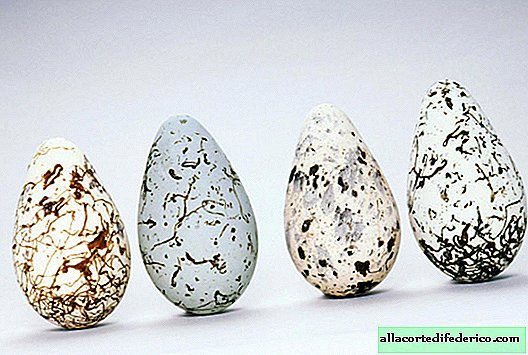Why are guillemots eggs so strange pear-shaped
The eggs of the birds are oval in shape, some more spherical, others slightly more elongated. And only some birds lay eggs that are absolutely incredible in shape with a pronounced sharp end, which are more like pears than ordinary bird eggs. These are thin-billed guillemots living in the polar regions of the Northern Hemisphere. We suggest you go to one of the bird markets and find out why the guillemots lay eggs so unusual in shape.

Thin-billed guillemots belong to the purebred family and are seabirds. These are medium-sized birds, usually they do not exceed 50 centimeters, eat fish and dive well. The color of their bodies resembles the colors of penguins, and some representatives of the species have specific patterns around their eyes, which is why they are called eyeglasses.

Most thin-billed guillemots live in the polar regions, on the islands and on the rocky continental shores of the Arctic. Some populations nest somewhat south, for example, on the Korean Peninsula or on the northern coast of Spain. But regardless of the geographical location of the colony, thin-billed guillemots for nesting choose steep cliffs on which bird markets are formed.

At first glance, the bird market seems like a chaotic pile of birds who are ready to fight endlessly and sort things out with their neighbors, disputing the best place in the sun. In fact, this is the best place for bird nesting that can be found on the entire coast, and that's why.

In the Arctic seas, cool, saturated with oxygen, a lot of fish resources. But because of the harsh climate, there are no full-fledged trees, and even with bushes there is a tense atmosphere. In such conditions, not many birds can afford to build nests right on the open ground or even in the grass, perhaps only those that can stand up for themselves. Sheer cliffs are an excellent outlet for those who want to protect their offspring from arctic foxes, polar wolves and large feathered predators. Thin-billed guillemots - one of the many species of birds that have chosen this option for themselves, they form entire colonies, which are located in completely incredible places. Housing conditions here are not the most comfortable, but for the sake of survival, inconvenience can be tolerated.

With a large number of birds, a pair of guillemots is not so easy to find a good place for a nest. More precisely, not for a nest, but for a place where a single egg will be laid, since these birds do not build nests in the traditional sense of the word. They simply choose a more or less even area and lay an egg there, after having defended their right to a good place in the battle with their fellow tribesmen. In such a turmoil and with such an unimaginable number of neighbors, eggs can be mixed up. But in this case, nature has provided a wonderful way: each egg is unique in color, shape and location of spots, which helps parents distinguish it from someone else's.

But even more ingeniously, nature made sure that the only egg did not fall from a steep ledge in the event of a gale or inaccurate movement of crowded neighbors. The egg has a conical shape and, with little movement, does not roll far, but rotates around the sharp end, returning to its previous position. The stability of such an egg, laid on a ledge of a sheer cliff, is significantly increased compared to eggs of a traditional form. It can be said that the thin-billed guillemots have mastered rock climbing to perfection, and their eggs are best suited to the difficult conditions of the bird market.


















